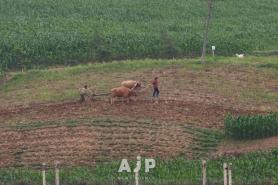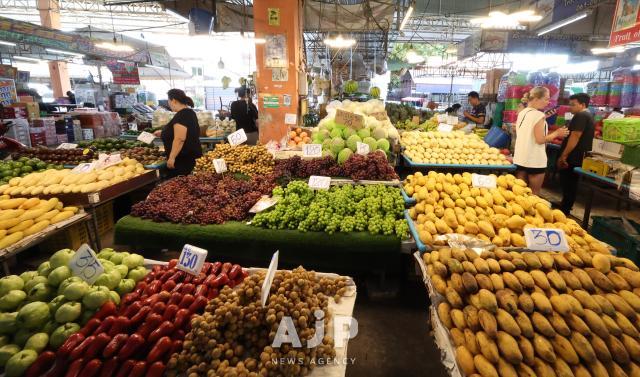
Pattaya, July 17 (AJP) – Known for its beautiful beaches, vibrant nightlife, and a wide range of marine leisure activities, Pattaya is one of Thailand’s most popular tourist and resort cities. It ranks second only to Bangkok in tourist visits. While sightseeing and enjoying local attractions are a major part of travel, experiencing how local people live can offer a refreshing and memorable perspective.
Traditional markets in Southeast Asia’s densely populated cities are famous for their energy and bustle. At wholesale markets filled with local people trading colorful tropical fruits, vegetables, fresh meat, and fish, travelers can get an up-close look at daily life. Among these is Rattanakornwanasin Market and its adjacent wholesale-oriented Ratanakorn Market—Pattaya’s largest fruit markets.
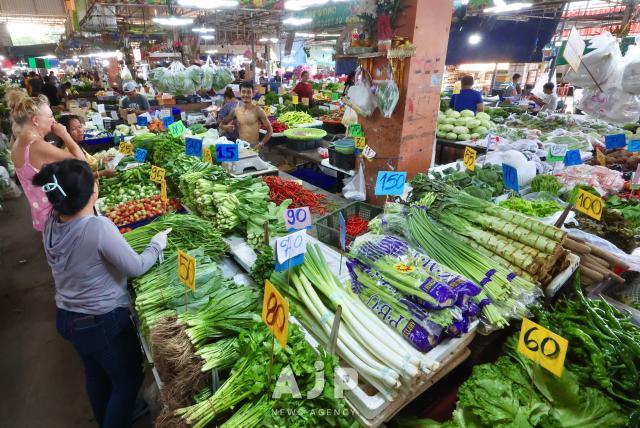
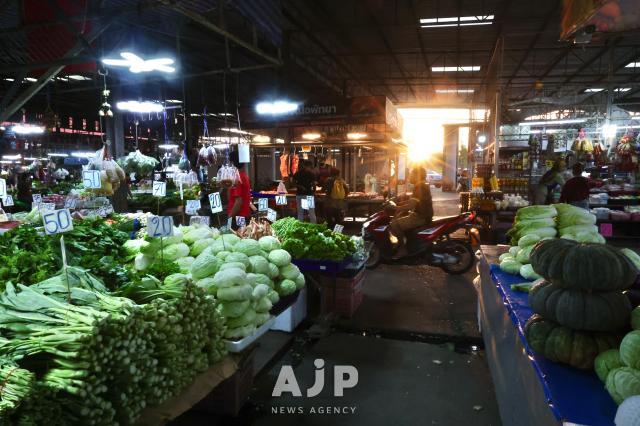
Markets in hot, tropical regions typically open at dawn and lose steam as the day heats up. Early morning is the best time to witness the market in full swing. When we arrived at Rattanakornwanasin Market just after sunrise, the vendors had already completed their setup and were welcoming customers. The semi-open building, covered only by a roof, was lined with neatly organized and immaculately clean stalls.
Brightly colored tropical fruits were stacked like small mountains, and the air was filled with a dizzying mix of sweet and tangy aromas, as if dozens of perfumes had been sprayed at once. Piles of carefully arranged fruit, neatly trimmed vegetables, and fresh meat were all marked with hand-written price signs—simple but direct. It felt less like shopping and more like visiting an exhibition curated by the vendors. Sellers preparing food or handling fish wore tied-up hair and long aprons, while some male vendors went shirtless in the humid heat. Their lean, strong physiques seemed to enhance trust in the freshness of their produce.
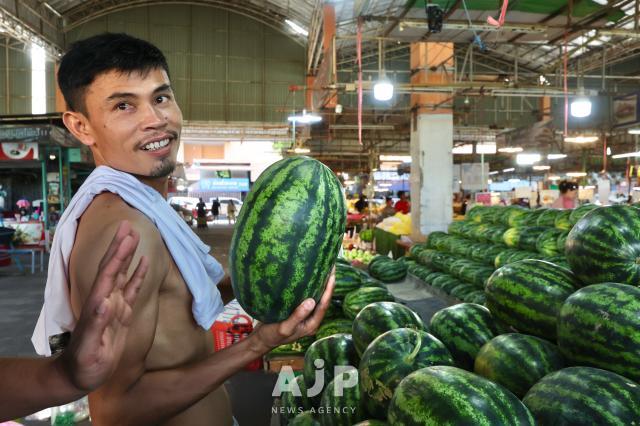
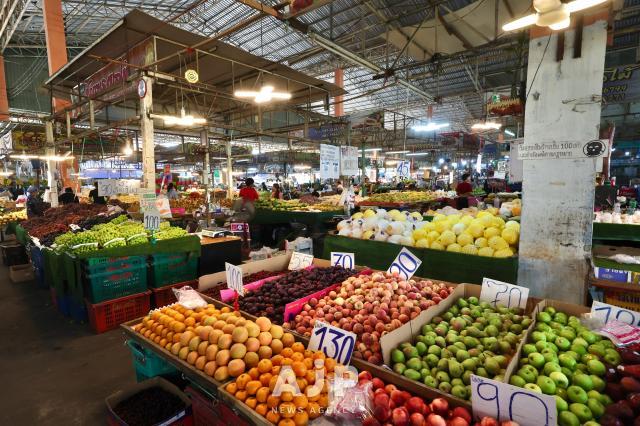
fruits on display ranged from familiar favorites like tangerines, watermelons, and mangoes to rare finds such as durians, dragon fruit, rose apples that resemble bell peppers, rambutans, and jackfruit. Pineapples, with their tough rinds, were stacked not just inside the truck beds but all around, piled as high as a small child. It was easily more pineapple than I had seen in my entire life. Vendors would peel and prepare them on the spot for customers.
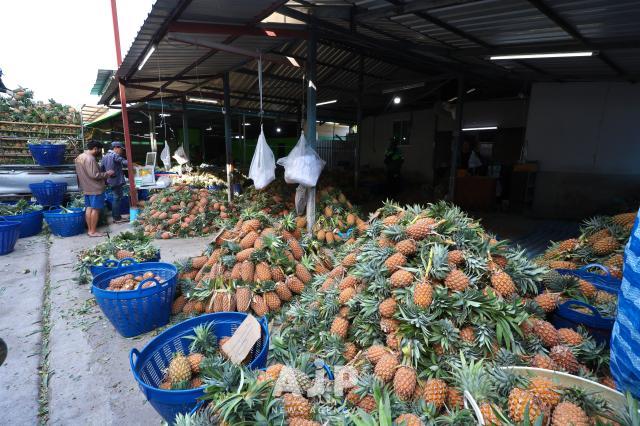
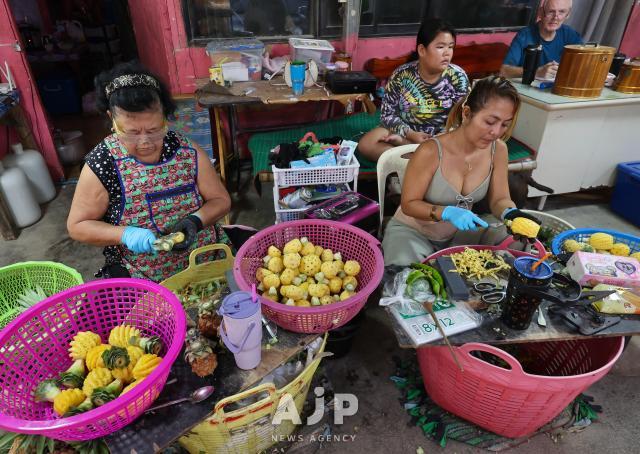
Prices varied by fruit, but mangoes, mangosteens, and watermelons—all familiar to Korean palates—were as cheap as half to a quarter of what they cost in Korea. Every fruit tasted as if it had been sprinkled with sugar, sweet and full of juice. In all my time in Thailand, I had never once been disappointed by the taste of fruit. The very first mango I tried there had a deep, rich sweetness I had never experienced before. It felt like a reminder of what it means to taste fruit where it is grown.
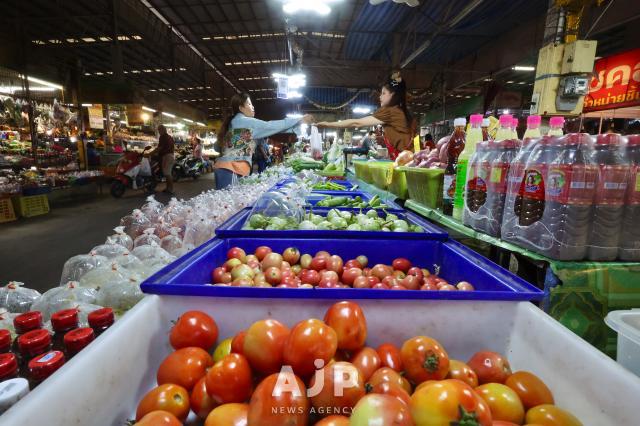
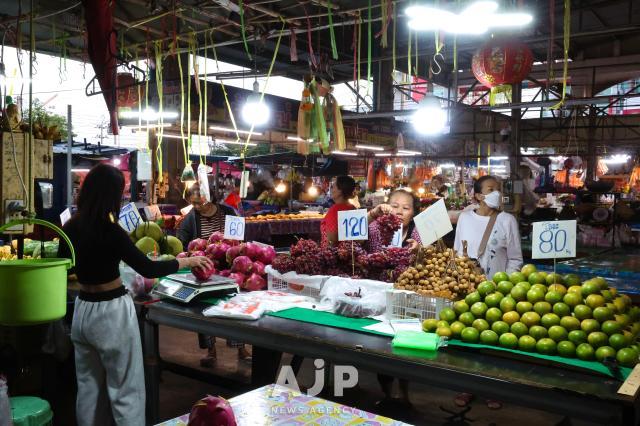
Thailand has long had a “sai-thung” culture, where nearly everything is packaged in a plastic bag. Vegetables, fruits, side dishes, soups, sauces, beverages, and coffee were all sold in these bags. But in 2020, Thailand banned single-use plastic bags in department stores, large supermarkets, and some retail outlets. Now, this practice is mostly seen in markets. The tightly inflated bags, resembling those used to transport ornamental fish, looked cute and somehow fresher and more appealing than deflated ones. These food bags are thicker than regular ones, so there was little worry about them tearing or spilling.
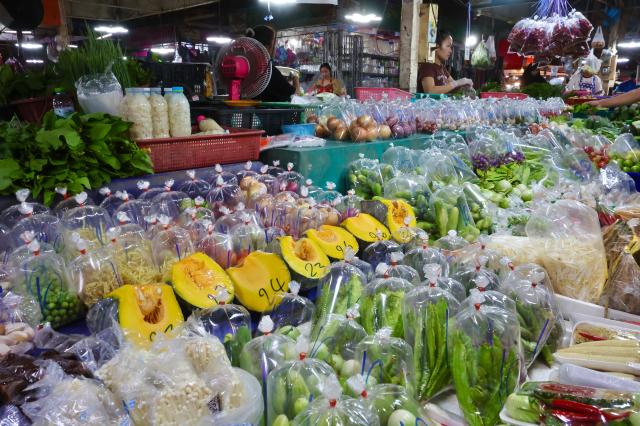
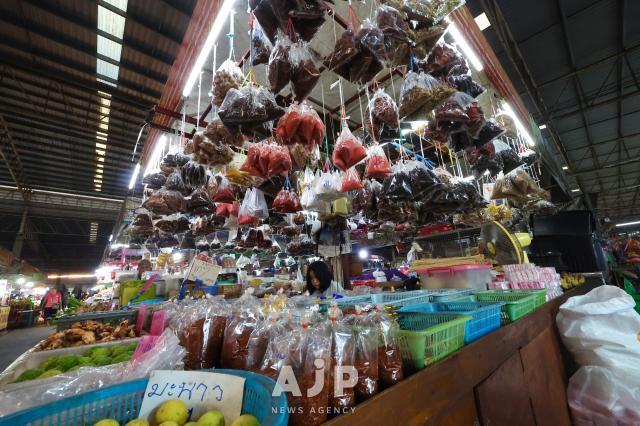
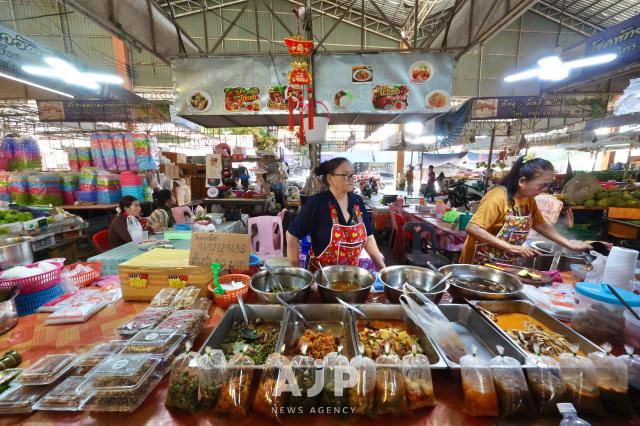
Butcher shops displayed their meats openly, rather than refrigerating them. Spread out generously, the meat looked freshly slaughtered and quite clean. In addition to fruits and meat, the market also included side dish stalls, fishmongers, and general goods vendors, offering the full experience of a traditional marketplace.
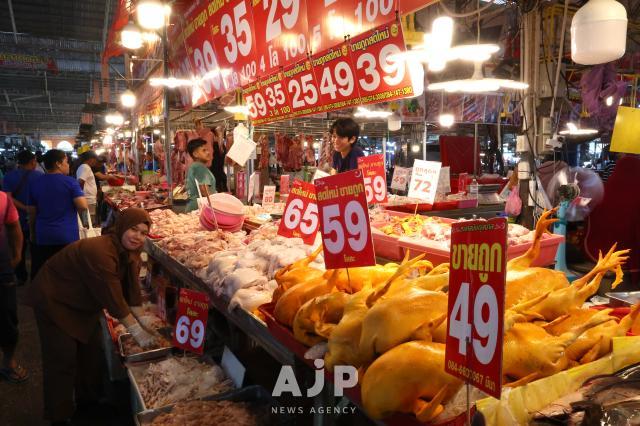
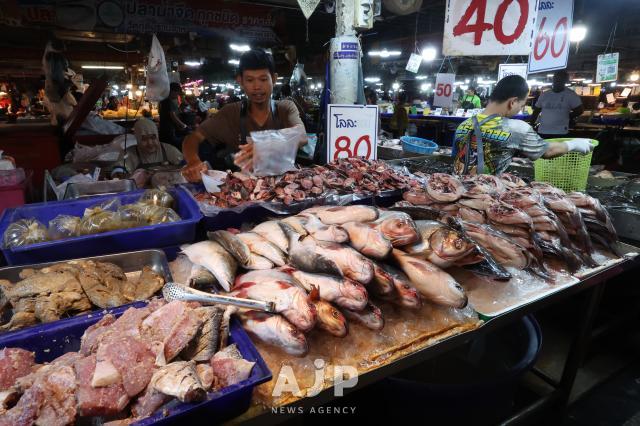
Though I had arrived early, most visitors were local Thais. A few Westerners, likely expats living in Thailand, were the only other foreigners. I felt like I was the only traveler in the place. Locals, seeing me with a camera, began chatting in Thai. I didn’t understand what they were saying, but I could instinctively tell I was the subject. For a moment, I worried. What if they don’t like being photographed?
But I soon realized there was nothing negative in their tone. After a short exchange, they began smiling at me. Some offered me a piece of fruit, others gave me a thumbs-up. Their gestures and expressions made it clear. They were welcoming me, and they were enjoying the moment just as much as I was.
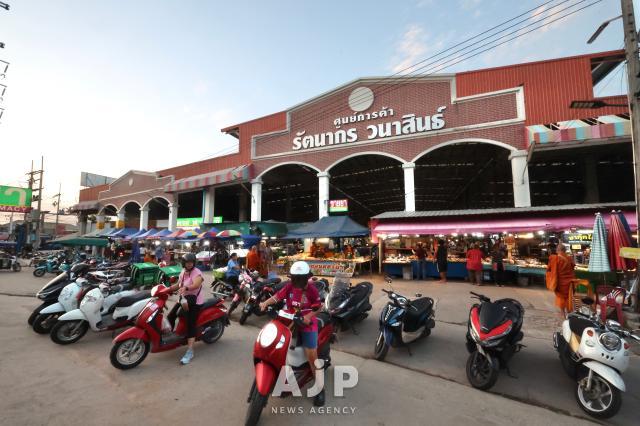
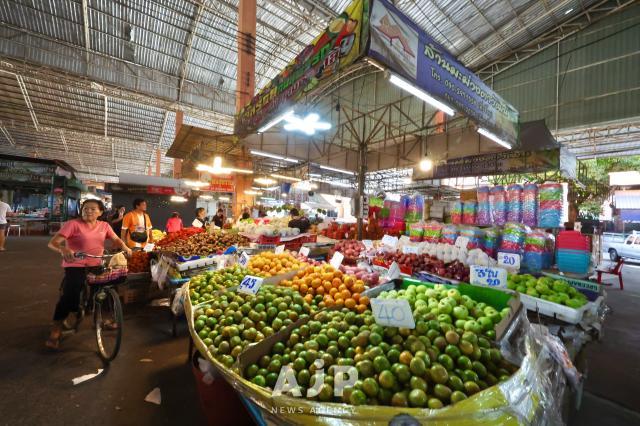
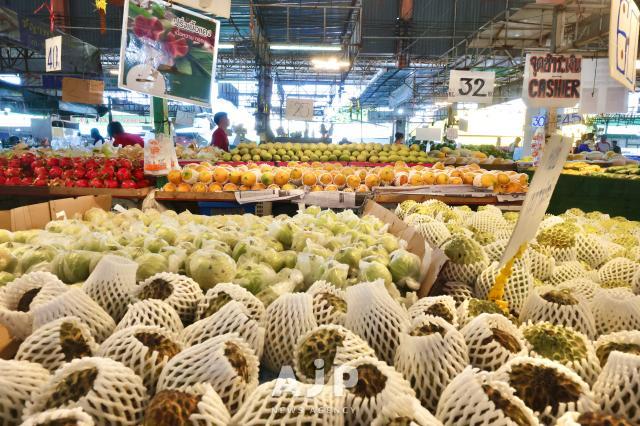
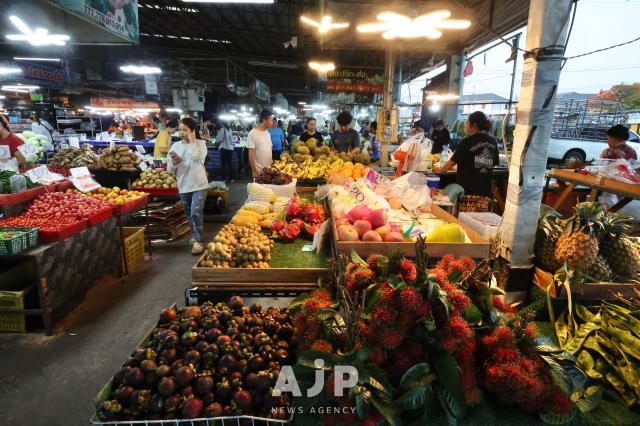

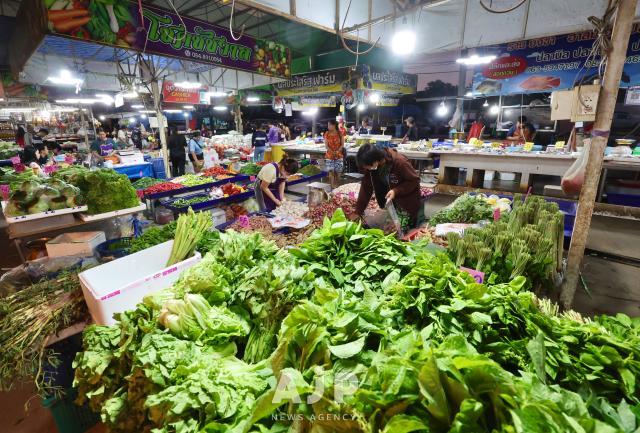
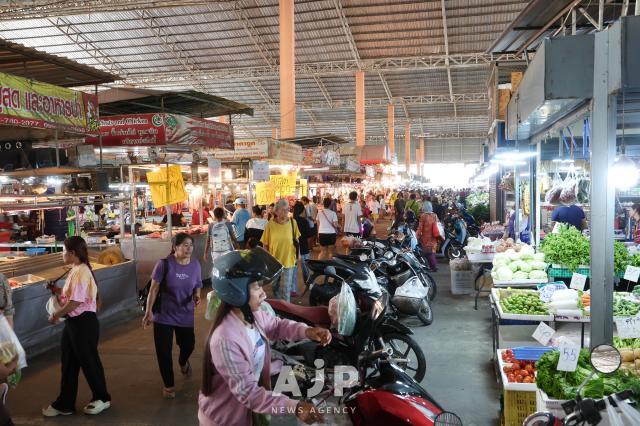
Copyright ⓒ Aju Press All rights reserved.


